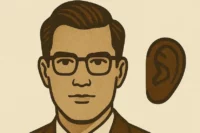Introduction: The Myth of Effortless Success
In today’s fast-changing world, it’s easy to believe that success belongs only to the smartest minds or the most naturally talented individuals. We admire the innovators who seem to solve problems with ease, or the leaders who appear unshakable in the face of challenges. Yet, history—and everyday life—repeatedly proves that lasting success is not reserved for the strongest or the most intelligent.
Success belongs to those who refuse to quit. It is persistence, not perfection, that separates dreamers from achievers.
The Modern Story of Rejection and Resilience
Consider the story of a young graduate in 2025. Armed with a degree, ambition, and hope, he applied for dozens of jobs across industries. Each rejection letter chipped away at his confidence. Interview after interview ended with a polite, “We’ve decided to move forward with other candidates.” Friends whispered, “You’ll never make it.”
It’s a scenario that resonates with thousands of young professionals today. The modern job market is fiercely competitive. Artificial intelligence is reshaping roles, traditional industries are contracting, and the pathways to opportunity are not as linear as they once were. For many, rejection is the rule—not the exception.
But here’s the turning point: rather than seeing rejection as a final verdict, this young man treated it as fuel. He remembered the stories of people who had faced similar trials—leaders, inventors, and thinkers who had once been told they weren’t good enough.
Historical Parallels: The Power of Refusal to Quit
This story echoes a timeless pattern. Throughout history, countless figures have faced failure and doubt:
- Albert Einstein was told as a child that he might never amount to much.
- Thomas Edison famously reframed thousands of failed experiments as “finding ways that didn’t work.”
- J.K. Rowling collected multiple rejection letters before the world met Harry Potter.
In each case, the eventual triumph wasn’t about extraordinary intelligence or unbeatable strength. It was about an unshakable refusal to stop trying.
Why Persistence Outshines Talent in 2025
The job market and professional world of 2025 underscore this principle more than ever. Talent and knowledge can open doors, but the pace of change ensures that no skill remains permanently relevant. Strength and confidence may impress initially, but they cannot guarantee long-term progress.
What sustains growth and achievement is persistence. Persistence allows people to:
- Adapt to Change: When industries shift, persistent individuals reskill, pivot, and reimagine their paths.
- Turn Rejection Into Resilience: Every “no” becomes part of the learning process.
- Outlast Competitors: While others give up after the first few hurdles, those who endure eventually reach opportunities others abandoned.
- Build Trust: Employers, clients, and peers value those who show consistency over time, not just flashes of brilliance.
The Psychological Trap of Giving Up Too Soon
Most people don’t fail because they lack ability. They fail because they stop trying. There’s a psychological bias known as “premature closure”—the tendency to conclude that something is impossible after a small number of setbacks.
In reality, every rejection is just data. Every missed opportunity reveals what needs to be refined. Giving up closes the door before success has a chance to arrive.
How to Turn Rejection Into Progress
If you’re in the same place as that young boy in 2025—sending out resumes, hearing “no” more often than “yes”—here are strategies to keep moving forward:
- Reframe Failure as Feedback: Instead of asking “Why me?” ask “What can I learn from this?”
- Set Micro-Goals: Success is built in increments. Small, consistent steps matter more than one giant leap.
- Track Progress, Not Just Outcomes: Even if you don’t get the job, did you improve your resume, sharpen your interview skills, or grow your network? That’s progress.
- Find Role Models: Read stories of individuals who overcame failure. Their journeys normalize setbacks and inspire perseverance.
- Celebrate Persistence: Reward yourself not just for wins but for showing up—sending another application, making another call, learning another skill.
From Rejection to Admiration
The young man’s persistence paid off. Years later, those same peers who once dismissed him began to admire his success. They saw the promotions, the growing confidence, and the steady trajectory. What they didn’t see were the countless quiet nights of rewriting resumes, the practice interviews, the internal pep talks, and the resilience forged in the face of doubt.
This transformation wasn’t about being the smartest candidate in the room. It wasn’t about being the strongest competitor. It was about staying in the game long enough to win.
Key Takeaway: Success Is a Marathon, Not a Sprint
The lesson for all of us—students, professionals, entrepreneurs, and dreamers alike—is simple but profound: success doesn’t belong to the strongest or the smartest. It belongs to those who never quit.
Persistence is not glamorous. It often happens in silence, away from applause. But it is the invisible force that builds futures.
Frequently Asked Questions (FAQ)
Q1: What if I keep facing rejection? Doesn’t that mean I should quit?
Not necessarily. Rejection is normal and often a sign that you’re aiming high. Instead of quitting, analyze the reasons behind each rejection. Adjust your approach, reskill where needed, but keep moving.
Q2: How do I know when persistence turns into stubbornness?
Persistence is about adjusting and learning along the way. Stubbornness is doing the same thing repeatedly without reflection. If you’re persisting wisely, you’re refining your strategy, not just repeating it.
Q3: Is talent still important?
Yes, but talent without persistence rarely leads to success. Persistence multiplies the value of talent. It ensures your abilities grow and stay relevant over time.
Q4: What small steps can I take to build persistence?
Start by setting daily goals you can control: send one application, reach out to one mentor, learn one new skill. Small, consistent actions build resilience and momentum.
Q5: How long should I keep trying before I see results?
There’s no fixed timeline. Some breakthroughs happen in months, others in years. The key is to stay consistent while regularly evaluating your approach. Remember, persistence shortens the distance between effort and outcome.
Final Thoughts
The story of the boy in 2025 is not unique—it mirrors the journey of countless professionals who push past rejection. Success is not a straight line, nor is it reserved for the privileged few. It is earned, step by step, by those who refuse to stop walking.
If you feel stuck or discouraged today, let this reminder anchor you: the world doesn’t need you to be the strongest or the smartest. It needs you to keep going.






